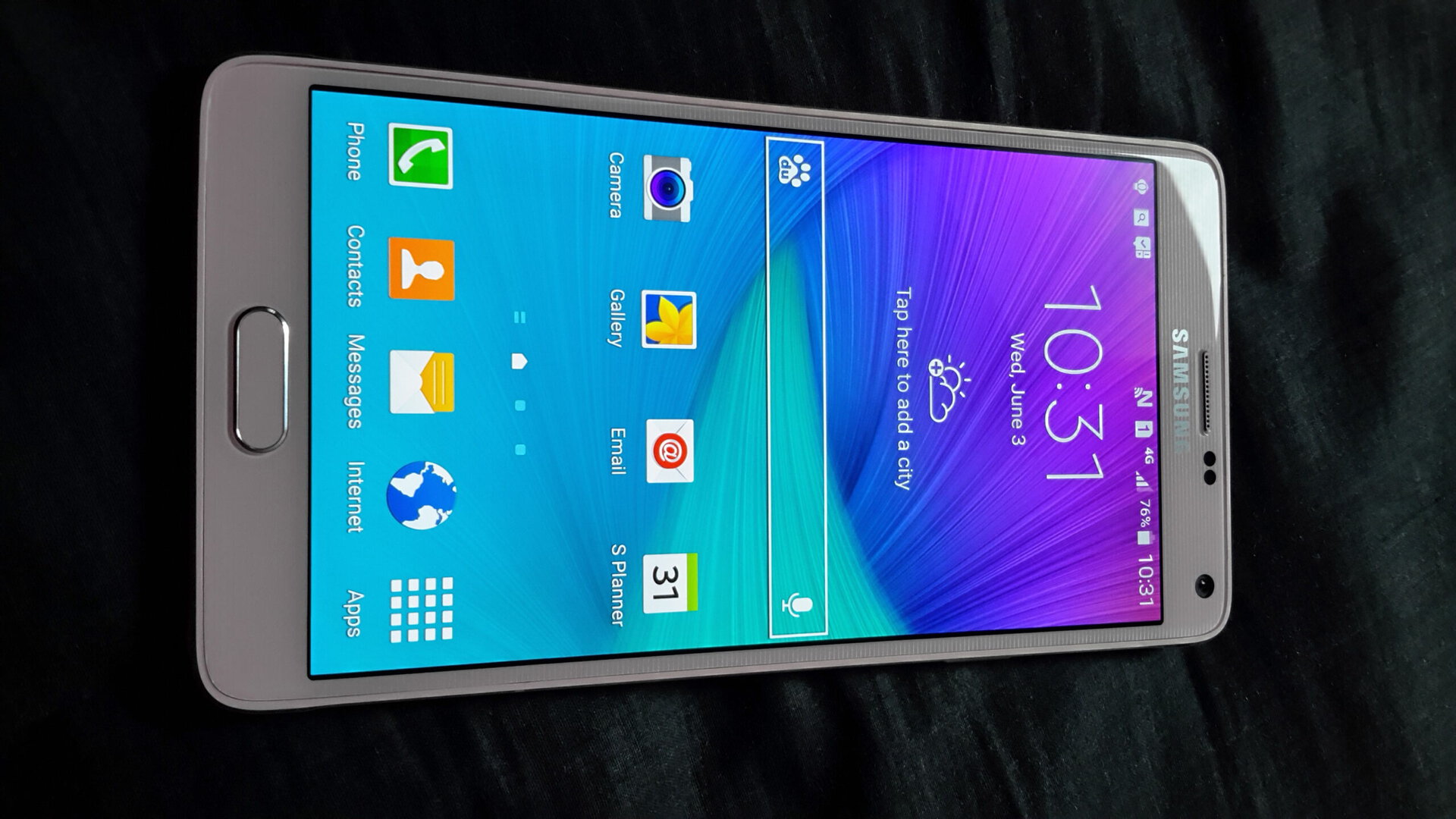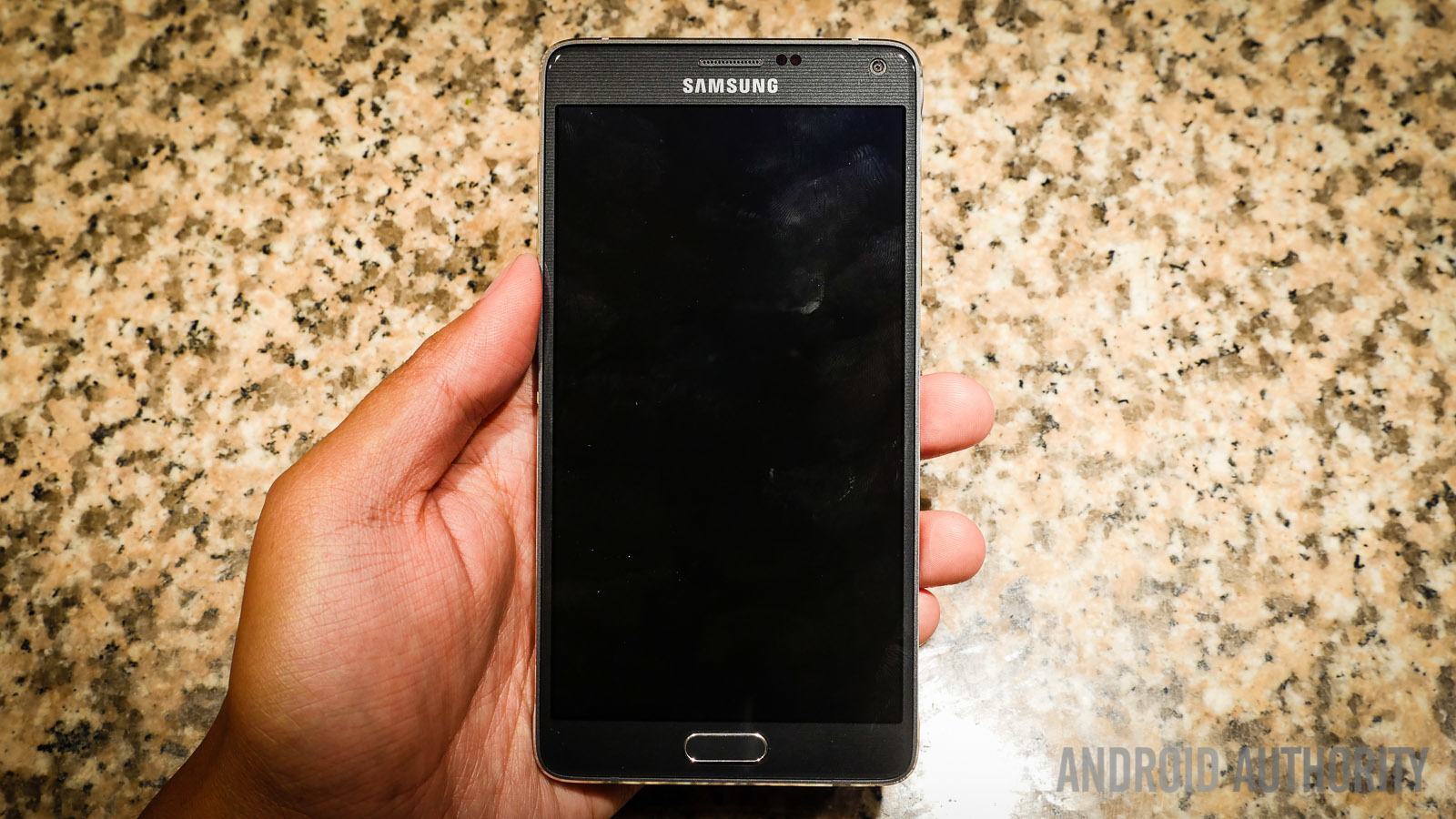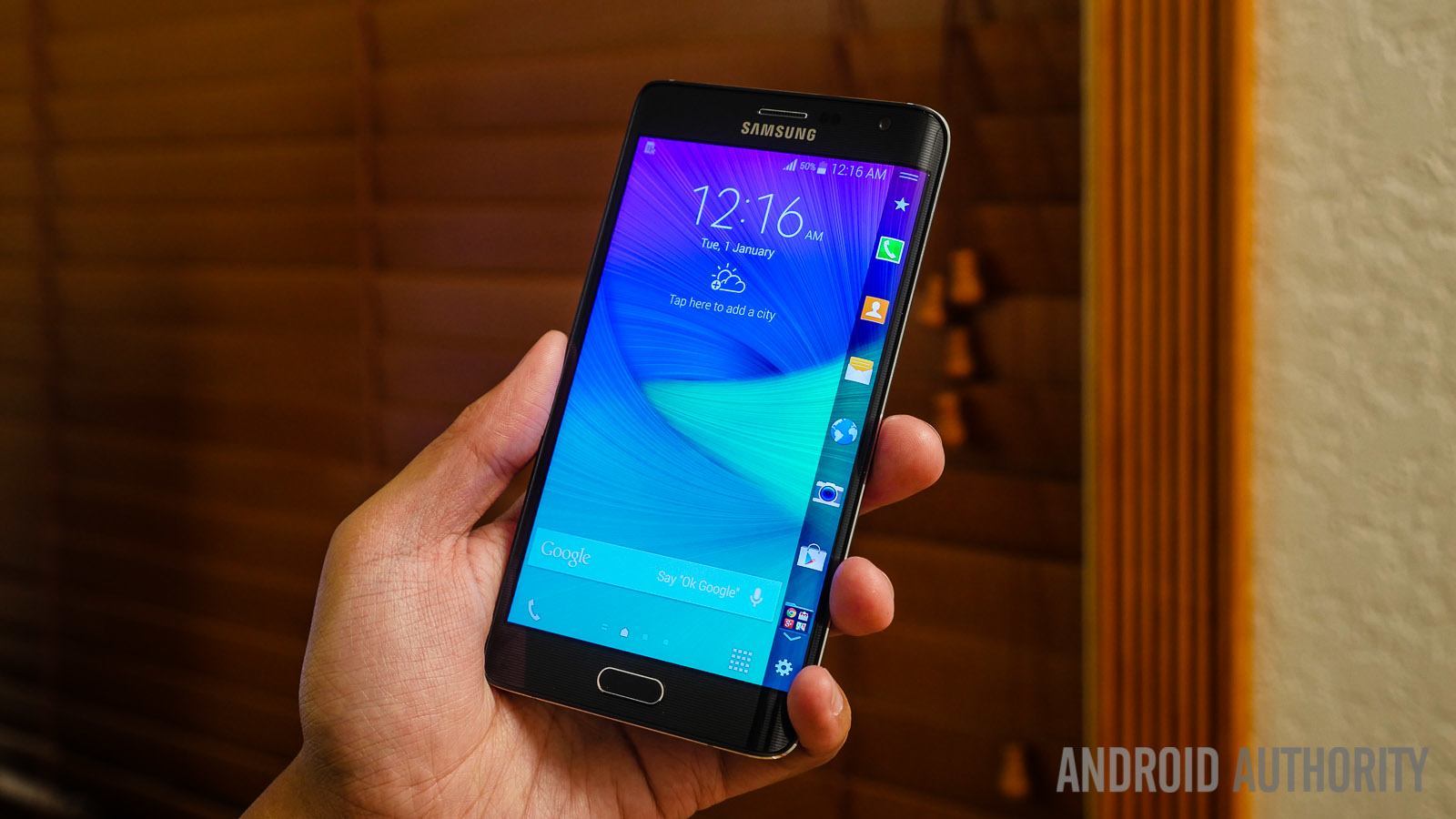Affiliate links on Android Authority may earn us a commission. Learn more.
A look at a Chinese Note 4 sold without Google services: it's just not the same

Last week, I mustered up my courage for a unique experience: using a Pink Galaxy Note 4. Ironically however, it wasn’t the color that required any form of social preparedness, rather it was the actual OS the phone was running on: Android. But not Android Android. No, this was a phablet direct from China, and thus it was running TouchWiz on “AOSP” minus any Google Apps or connectivity framework.
Needless to say, the time I spent with this China-friendly Note 4 was met with amusement, confusion, and in many cases, downright frustration. It was also, interestingly enough, a surprising wake-up call.
China’s Change
As far as the packaging and contents went, everything seemed relatively normal. The box looked the same as any random Hong Kong-variant for the most part, however the warranty card was quite extensive. The USB cable was preset inside some kind of plastic frame to secure it. Interestingly enough, earlier that day I had watched several YouTube videos of Galaxy Note 4 “replicas” (clones) from China, and they all had the same plastic frame around the fake USB cord. Truth be told, I was somewhat skeptical of the cable included here being legitimate, though as the rest of the package was original, I can only assume Samsung does indeed use the frame for the USB cords in China. Nice touch.
Powering on the device: Despite the fact that things look like business-as-usual, from the moment I turned on the Chinese Galaxy Note 4, it was quite clear that not all was here. At no point during the normally lengthy set-up process did it ask for, or initiate, any semblance of Google connectivity. There were, however, some prompts for permissions and whatnot for Baidu Services, what can only be described as the “Google of China.”
Given the general belief that privacy is a totally alien concept in China, it was that much more interesting to see an option to reject the various permissions, though in all honesty I was still somewhat apprehensive about the phone’s ability to use my data for unauthorized purposes.
After the set up completed, I was immediately struck by the presence of a Baidu Search Widget, as well as some unique China-only apps, most of which were bloatware. The app drawer was surprisingly less cluttered with junk than I expected, however the second page in particular was almost comprised entirely of China-centric apps, many of which could not be removed from the phone. I was surprised however, that some core apps could be deleted.
I missed my work schedule because there was no Gmail for it to arrive on. I instinctively went to check for apps only to realize that not only was it impossible, but there were no actually Play Store apps that were on my phone to begin with.
Clicking on the Baidu Search Widget led to a rather Google-esque experience, along with the TouchWiz Chinese input keyboard, something I had seen several times before with Hong Kong variant devices. There were also some connectivity issues with Kies, though eventually I was able to get the device to upgrade to Lollipop.
A standstill

While the device itself basically operated as a Galaxy Note 4, after spending just a few minutes with it, the frustration started. The experience was, at best, surreal. I’m not a power user by any means, however, it never occurred to me just how often I use some form of Google app. I missed my work schedule because there was no Gmail for it to arrive on. That immediately sent me through the motions to open the Google Play Store only to be reminded of its MIA status. Even trying to manually recreate my typical user experience was problematic. I use apps like Beautiful Widgets, for example, yet even when I side loaded it, the file crashed. I tried to manually install several of the core Gapps (Play Store, for example) however they immediately crashed as well. Upon doing a quick search, this was the apparent result of a lack of Google Play services framework, all of which are required for “Android” to function properly.
The end result was a rather curious product, and one that quite honestly I wasn’t very interested in using for more than a limited time at best. It has been said that Samsung is Android, but this experiment more-or-less proved, to me at least, that Samsung’s Android without Google is really a diminished experience at best.
Lessons learned
The larger reaching question here, aside from the issues Google itself has with China, is just how full fledged Samsung’s own Tizen OS will ever become. The company has made no small effort to begin to distance itself from Mountain View. The Gear smartwatches have used Tizen for well over a year now (the first of which was actually originally running on Android and then switched over via a software update). The Samsung Z1 has achieved a relatively fair amount of success in the few countries it’s available in, and there are greater plans across multiple product categories.
Unfortunately, without some kind of comprehensive, unified, integrated framework to link everything together, the benefit to customers is a bit questionable, at least in terms of jumping ship from Android (or iOS).
The other big take away here was the realization of just how dependent I am on the Google Services framework. Despite my not using 80% of Google apps, it was a bit shocking to discover how dysfunctional my life became without the main ones. Chrome, for example. Gmail. Google Plus. Things like having access to my contact list. Things like Hangouts. Things like… Everything I’d ever purchased from the Play Store and many of which I use daily, like SwiftKey. While many of the Google apps could be worked around, the Play Store purchases really couldn’t.
Wrap up

At one point, I found it striking how heavily “locked-in” iOS users are with their devices. Despite my occasionally dabbling in Apple land, or Windows Phone for that matter, neither can ever hold my interest beyond a few weeks at best for the total lack of software that I have grown so accustomed to in my daily life.
Of course, it would be unfair to paint Chinese domestic phones as somehow “inferior” simply because they are lacking Google Play. In truth, the Baidu framework that comes pre-installed could be a grand replacement for Google’s stylings were I to have a vested interest in said platform’s offerings. Likewise there are an impressive number of app stores available in China, thus if one doesn’t have an app, chances are another will.
Still, for those used to Google it’s quite an adjustment at best.